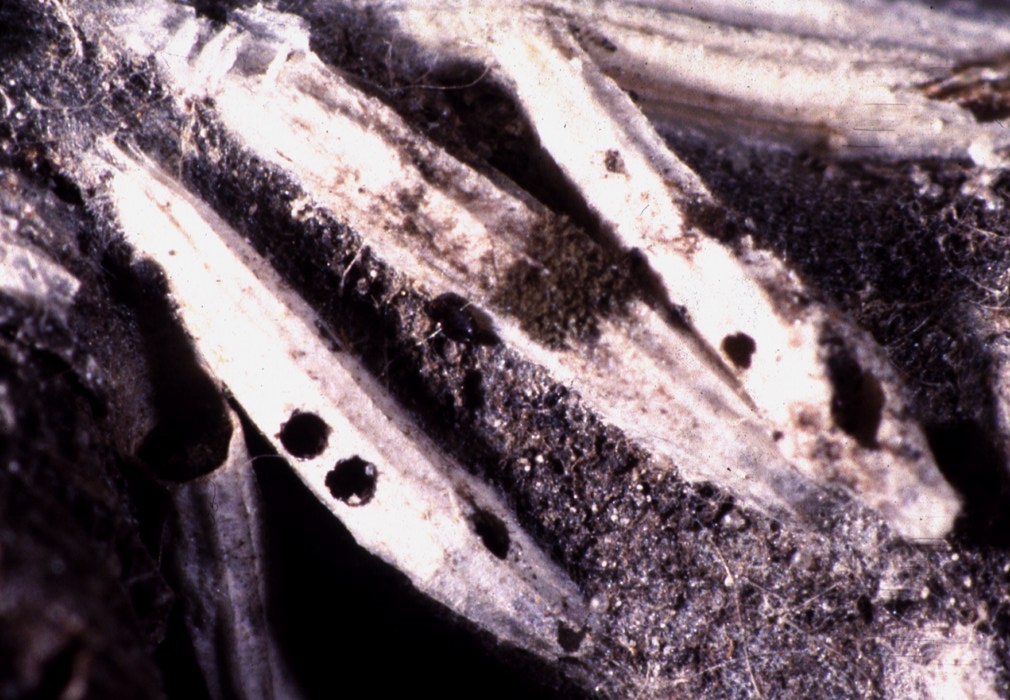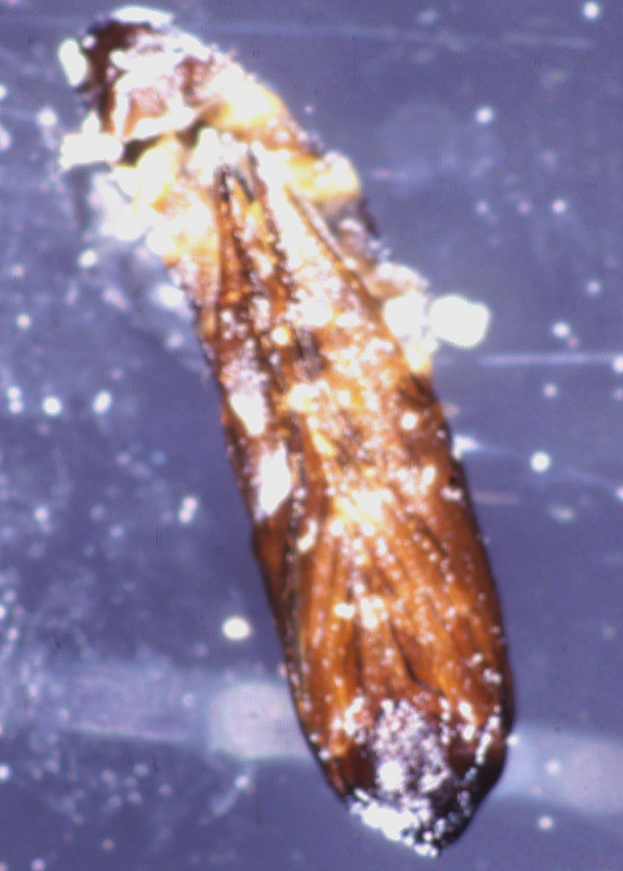

This is summarized primarily from Manual
of
Fruit Insects, by M. V. Slingerland and C. R. Crosby
(1915).
I. Introduction: This moth is widespread in eastern North
America. It is rarely of economic importance, but may be common
in
isolated locations. Under outbreak conditions, leaf injury
(skeletonizing) can be severe. Little attention has been paid to
its
biology and control in recent years.
II. Hosts: Apple.
III. Description: The larvae are greenish brown
caterpillars.
Adults are light brown moths measuring only about 1/16 inch in
length;
there is a dark brown spot on each wing. Cocoons are
characteristic -
white with longitudinal ridges running the full length, and
about 1/4
inch in length.
IV. Biology: The biology of the ribbed cocoon maker is
not well
known. Pupae pass the winter in cocoons on the bark on the
undersides
of smaller branches. Adult emergence occurs as leaves are
unfolding in
the spring. After a few days, tiny light green eggs are laid on
the
undersides of leaves. Eggs hatch in 6-10 days, and larvae tunnel
directly into the leaves. Each larva creates a narrow mine for
about a
week. The larva then leaves the mine to create a molting cocoon.
After
molting in this cocoon, the larva feeds near the leaf edge.
After about
4 days, a second molting cocoon is made. The last stage larva
appears a
couple of days later, and skeletonizes foliage for about a week.
In
mid-summer (early July in New York), a cocoon is formed in which
to
pupate. The pupal stage lasts 1-2 weeks. A second generation
occurs in
late summer and fall. Winter coccons are often heavily
parasitized.
Larvae are preyed upon by spiders.
V. Injury: Young larvae create narrow winding mines.
Larger
larvae skeletonize foliage. The second generation can cause
heavy
injury in outbreak conditions.
VI. Monitoring: White, ribbed cocoons may be conspicuous
in the
winter. Because of the sporadic nature of this pest, neither
formal
sampling procedures nor thresholds have been established.